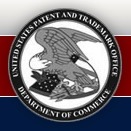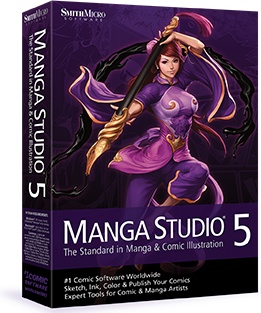Several Apple patents have appeared at the US Patent & Trademark Office. Following is a summary of each.
Patent number 7,948,576, won by Apple, is for a P-chassis arrangement for positioning a display stack. It relates to portable electronic devices and, more particularly, to a chassis which may be used to align a display stack with respect to a bezel.
Methods and apparatus for aligning a display stack with respect to a housing associated with a portable electronic device are disclosed. According to one aspect of the present invention, a chassis arrangement suitable for use in aligning a display stack with respect to a housing includes a first portion, a second portion, and a coupling arrangement.
The first portion is configured to engage the display stack, and the second portion is configured to enable the display stack to be manipulated when the display stack is engaged by the first portion. The coupling arrangement couples the first portion with the second portion, and is configured to enable the second portion to be detached from the first portion. The inventors are Richard Hung Minh Dinh, Wei Yao and Erik Wang.
Patent number 7,949,117, also granted to Apple, involves heterogeneous video conferencing. Some embodiments provide an architecture for establishing a multi-participant conference. This architecture has one participant’s computer in the conference act as a central content distributor for the conference. The central distributor receives data (e.g., video and/or audio streams) from the computer of each other participant, and distributes the received data to the computers of all participants. In some embodiments, the central distributor receives A/V data from the computers of the other participants.
From such received data, the central distributor of some embodiments generates composite data (e.g., composite image data and/or composite audio data) that the central distributor distributes back to the participants. The central distributor in some embodiments can implement a heterogeneous audio/video conference. In such a conference, different participants can participate in the conference differently. For instance, different participants might use different audio or video codecs.
Moreover, in some embodiments, one participant might participate in only the audio aspect of the conference, while another participant might participate in both audio and video aspects of the conference. The inventors are Hyeonkuk Jeong, Joe Abuan, Jim Normile, Ryan Salsbury, and Shing Berkat Tung.
Patent number 7,949,832 involves latency reduction for cache coherent bus-based cache. In one embodiment, a system comprises a plurality of agents coupled to an interconnect and a cache coupled to the interconnect. The plurality of agents are configured to cache data. A first agent of the plurality of agents is configured to initiate a transaction on the interconnect by transmitting a memory request, and other agents of the plurality of agents are configured to snoop the memory request from the interconnect.
The other agents provide a response in a response phase of the transaction on the interconnect. The cache is configured to detect a hit for the memory request and to provide data for the transaction to the first agent prior to the response phase and independent of the response. The inventors are Brian P. Lilly, Sridhar P Subramanian and Ramesh Gunna.
Patent number 7,949,918 is for allowing media and gaming environments to effectively interact and/or affect each other. Techniques for allowing gaming and media environments to interact with which each other and/or affect each other are disclosed. The techniques are highly suitable for computing systems (or devices) that can execute games and/or present media. In one embodiment, a gaming environment can be determined and/or affected based on one or more aspects of a media environment.
By way of example, gaming content and/or the gaming experience provided and/or suggested to an individual can be tailored based on his/her musical profile effectively obtained from the media environment associated with the individual (e.g., based on favorite songs, songs recently played, songs purchased). Similarly, a media environment can be determined and/or or affected by a gaming environment. By way of example, musical content provided and/or suggested to an individual can be based on his/her gaming profile (games played, games purchased, manner in which a game is played). In addition, an open media-gaming environment can be provided where various media and gaming components can be integrated together.
By way of example, an individual can identify one or more of his favorite songs to be presented for a game. The game can be packaged and/or sold without the song(s) but configured to receive and effectively provide them for game play. The inventors are Stanley C. Ng and Michael D. Lampell.
Patent number 7,948,477 is for a PET-based touchpad. Per the patent, a space-efficient substantially transparent mutual capacitance touch sensor panel can be created by forming columns made of a substantially transparent conductive material on one side of a first substantially transparent substrate, forming rows made of the substantially transparent conductive material on one side of a second substantially transparent substrate, adhering the two substrates together with a substantially transparent adhesive, bringing column connections down to the second substrate using vias, and routing both the column and row connections to a single connection area on the second substrate.
In addition, in some embodiments some of the row connections can be routed to a second connection area on the second substrate to minimize the size of the sensor panel. Steve Porter Hotelling is the inventor.
Patent number 7,948,187 involves electronically controlling acoustic energy from piezoelectric transformers. Per the patent, A power-supply circuit is described. In particular, the power-supply circuit includes an input node configured to receive a power-supply signal, an output node configured to output a modulated power-supply signal, and a modulation mechanism coupled between the input node and the output node.
This modulation mechanism is configured to modulate the power-supply signal to produce the modulated power-supply signal. Furthermore, the modulation mechanism may be configured to modulate the power-supply signal using both a first modulation and a second modulation. This first modulation is a duty-cycle modulation which controls the power output of the piezoelectric transformer signal, and the second modulation spreads harmonic energy associated with the first modulation over a range of frequencies.
By spreading the harmonic energy, the perceived acoustical noise generated by the piezoelectric transformer is reduced. The inventors are Thomas C. Greening and William C. Athas.
Patent number 7,949,317 involves a momentary burst protocol for wireless communication. It’s for a method for communicating data using a “burst protocol” includes enabling power to transmitters and receivers when needed to balance power consumption with latency and unscheduled communication. A transmitter transmits a plurality of packets indicative of substantially the same payload. Power then may be disabled to the transmitter. A first predetermined time is determined to enable a receiver. A second predetermined time is determined to disable the receiver. Power then may be enabled to the receiver based on the first predetermined time. The payload is output in response to receiving one or more of the plurality of packets. Power to the receiver is disabled based on the second predetermined time. The inventors are Scott Krueger and Gregory Lydon.
Patent number 7,949,634 is for synchronization methods and systems. Widget synchronization architectures, methods, systems, and computer readable media are described. One exemplary embodiment includes a first software component which is configured to cause retrieval and storage of data for a first data class for one or more widgets from a first store of the data on a device, such as a first data processing system, and is configured to synchronize data for the first data class in the first store with data of the first data class in a second store on at least one of a host or another device, such as a second data processing system.
The first software component is separate from a widget application software which provides a user interface to allow a user to use the data. The first software component synchronizes the structured data through a second software component which interfaces with the host and the device. Gordon J. Freedman is the inventor.
Additionally, Apple has been granted two design patents: one for the previous gen iPad nano and for a MobileMe icon.
— Dennis Sellers



